Oh What a Beautiful Burger
An Onion-Fried burger is a beautiful thing—an Oklahoma original, fusing beef and onions to create something that goes beyond the usual patty on a bun. Known and admired throughout the state (which we think of as the most hamburger-conscious place in the nation), the onion-fried burger seems to have been born in the old frontier settlement of El Reno, just west of. Oklahoma City in the Canadian River valley. There are currently four restaurants in El Reno that are known for this specialty—more than a dozen others have come and gone since the 1920s—but three of them do not bother to list onion-fried burgers on the menu. In this town, when you order a hamburger, you get an onion-fried burger unless you specifically instruct the cook to leave the onions out.
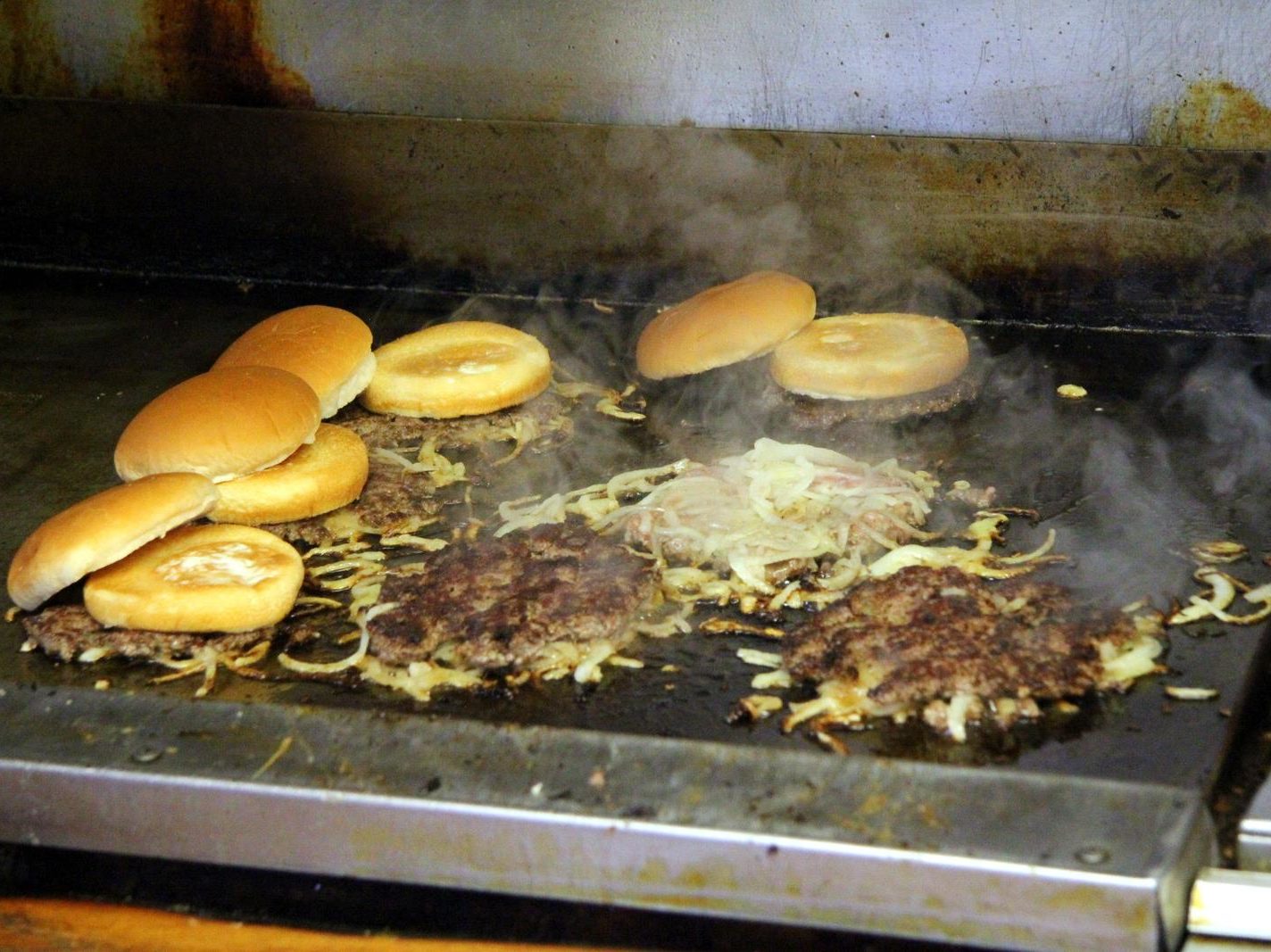
By Jane and Michael Stern
Originally Published 2000 Gourmet Magazine
An Onion-Fried burger is a beautiful thing—an Oklahoma original, fusing beef and onions to create something that goes beyond the usual patty on a bun. Known and admired throughout the state (which we think of as the most hamburger-conscious place in the nation), the onion-fried burger seems to have been born in the old frontier settlement of El Reno, just west of. Oklahoma City in the Canadian River valley. There are currently four restaurants in El Reno that are known for this specialty—more than a dozen others have come and gone since the 1920s—but three of them do not bother to list onion-fried burgers on the menu. In this town, when you order a hamburger, you get an onion-fried burger unless you specifically instruct the cook to leave the onions out.
To discover what puts the onion-fried burger in a class by itself, we head for Johnnie’s Grill to watch one being made. At the 560 square-foot diner opened by W. J. “Johnnie” Siler in 1946, grill man Otis Bruce slaps a quarter-pound mound of 81 percent lean ground beef onto a hot griddle. He grabs a fistful of very thinly sliced yellow onions—about the same cubage as the burger—and gingerly places them on top. Immediately, he flattens the onions and the meat together with a spatula, creating a broad circular patty with an uneven edge. Then he presses down three or four more times, slightly changing the angle of attack with each press and catching only one half to two thirds of the patty each time. The ribbons of onion are mashed deep into the top of the soft meat, which assumes a craggy surface because of the uneven, overlapping spatula work. Once the underside is cooked, the burger is flipped. The air around the grill clouds with the steam of sizzling onions. After another few minutes, the hamburger is scooped off the grill—the darkened caramelized onions now one with the patty—and put on a bun, onion side up. Lettuce, tomato, mustard, and pickles are all optional, but no condiment is necessary to enhance this simple, savory creation.
Before 1-40 relieved travelers of the necessity (and the joys) of driving along the main streets of southwestern towns and cities, Route 66 was the major artery between the Osage Nation and the Texas Panhandle, with El Reno smack in the middle, at the crossroads with Highway 81. From the 1920s well into the 1950s, wayfarers along the Mother Road couldn’t help but know about El Reno’s specialty as they drove into town: Its prairie air is always laced with the perfume of cooking onions.
Hamburger authority Judith Thompson, who grew up in El Reno and whose father was a grocer who supplied meat to the restaurants, remembers how she and her high school classmates stood three deep behind the counter stools at Robert’s Grill, working their way forward to order their lunchtime burgers. Edward Graham, proprietor of Robert’s, one block west of Johnnie’s, says that children have always sneaked in for a few onion-fried hamburgers after school. But the secret snacks seldom go undiscovered. “When they walk in the door at home, their mothers can smell exactly where they’ve been,” Graham says. He also notes that cravings for El Reno’s distinctive hamburgers pay little heed to the ordinary timing of lunch. “I open here for breakfast at six every morning,” he says. “Some days the phone is ringing before I unlock the door—people needing hamburgers. There is a guy who passes through on his way to Texas. He tells me he’ll be here at 6 A.M. and needs a couple dozen onion-fried burgers to eat along the way.”
AS WE DEVOUR a brace of Robert’s hamburgers, made by Graham in an especially juicy configuration, with glistening, limp squiggles of onion falling from inside the bun, we ask him who Robert was, figuring that this restaurant must be the fountainhead of onion-fried burgers. It is a museum-piece town café, El Reno’s oldest extant hamburger shop, dating to 1926. “Robert is gone,” Graham tells us. “He now owns Jobe’s.” (A drive-in on the outskirts of town, Jobe’s still features car berths with working Order-Matic menus that have built-in walkie-talkies for placing orders. Double-meat burgers and triple-decker burgers are delivered to your window by carhops.) “But Robert was not the one who started this place,” Graham continues. “I believe it was built by two brothers who called it Bob’s White Rock. They planned to open White Rocks all ova the West.” Graham is quite certain that the brothers were not the inventors of the onion-fried burger, just entrepreneurs with a vision of hamburger hegemony.
Steve Gallaway, who owns Johnnie’s—having bought it in 1995 from Otis Bruce (now the grill man), who himself bought it in 1967 from founder Johnnie Siler—says he believes it was a pair of peripatetic railroad men who conceived the onion-fried burger sometime in the early 1900s in an effort to settle down in one place. Thompson corroborates the timeline. “My dad told me that when he moved to El Reno, in 1919, hamburgers were a nickel apiece. When I was a child, they were a dime.” (Today the going rate is about $1.75.)
We get more and more confused by the intricate relationships of the town’s various hamburger chefs, all of whom seem to like and admire each other (and many of whom have worked for each other) despite the fact that they are competitors. Then we walk into Sid’s Diner, a block west of Robert’s, and think we’ve hit paydirt in the quest for onion-fried–burger provenance. After all, proprietor Marty Hall (who learned the business working at Johnnie’s) has used 11 gallons of clear epoxy to seal some 450 archival photographs of El Reno on the top of the counter and the tables. He’s arranged things in chronological order starting at the far left of the restaurant. Hall’s visual history long predates the onion-fried burger and includes pictures of Chief Black Kettle (who was killed west of town by George A. Custer in the Washita Massacre) and Caddo Jake, who ran a ferry across the South Canadian River. Hall points to a photograph of his great-grandfather, a sure enough cowboy in Stetson hat and chaps, on a horse with rope and saddle, who homesteaded west of town in the early 1900s. “Did you know that El Reno was once larger than Oklahoma City?” he asks. “This was the western border. Beyond here was Indian territory.”
Hall makes a hamburger in which the onions are exquisitely caramelized by their term on the griddle, and yet, despite his fondness for history, he can’t tell us much about the burger’s origins. He does explain that the restaurant is named Sid’s after his dad, whose dream was to open a hamburger place but who passed away before he and his son could do it together. And he provides us with a nice summary of how the onion-fried burger fits into the small town’s allure: “A hamburger, good people, and Route 66—you won’t get more American than El Reno.” But we leave Sid’s still wondering when and where the unique burger began.
The next morning, back at Johnnie’s counter eating Arkansas sandwiches (that’s a pair of pancakes layered with a pair of eggs), we finally find what seems like an authoritative description of the onion-fried burger’s beginnings. Gallaway and Bruce introduce us to nearly every person who walks in the door, and nearly everyone has something interesting to say about their experience with El Reno hamburgers.
After we meet Everett Adams, the pie man, as he wedges his way into the 30-seat restaurant toting above his head a battered tray that holds still-warm coconut-meringue and Boston-cream pies, Bruce tells us to talk to Bob Johnson, who, as usual, has come for breakfast.
Johnson says with certainty that it was a man named H.W. Davis who opened El Reno’s first onion-fried–burger restaurant, the Hamburger Inn, sometime in the 1920s. About ten years later, Johnson’s uncle Darrell Hurst bought it. In World War II it was taken over by a guy remembered only as Hindy, and in the early 1950s, Davis’s son Ross bought it back from Hindy. “That’s when I lost track,” Johnson confesses. “I moved to Alaska in 1957, and when I returned in ’75, Ross had opened Ross’s Drive-In (although the Hamburger Inn was still operating, under other management).”
ONE REASON for his return to El Reno: He missed the onion-fried burgers. “I tried to make them out of moose and caribou as well as beef, but it was never right, because I only had a skillet, not a thick, seasoned grill. To make a good onion-fried burger, the grill has to be well seasoned—and there are a lot of well-seasoned grills in El Reno.”
One other piece of history we learn pretty much for certain over breakfast: Morgan Stafford, who owned a town burger shop about five decades ago, was the man who developed El Reno slaw. Amazingly, this southern plains town of some 15,000 citizens has yet another food specialty—the slaw that is used on local versions of the Coney Island frankfurter. A pickly-sweet, mustard-colored hash of finely minced cabbage, the slaw is vaguely like piccalilli, but it has a taste and drippy texture like no other. Its usual place is atop the chili that adorns a weenie on a standard-issue El Reno “Coney,” transforming a tidy bunned hot dog into seriously messy fork-food. Nearly as popular as onion-fried burgers, slaw and chili topped hot dogs are available at all the hamburger restaurants—each has its own variation of the slaw recipe, the formulas for which have been passed down by generations of grill cooks. Several local eaters consider slaw to be El Reno’s gastronomic pride as much as the onion-fried burger. “We have some so crazy for it that they get it on their hamburgers!” Gallaway says. (To our callow onion-burger palates, the combo is a great idea.) “And some come in and order nothing but a bowl of slaw!” By the end of our visit, the convolutions of burger and slaw genealogy send our heads spinning. But one thing is clear: This is a town of deep culinary passion.
Jobe’s Drive- In (permanently closed)
1220 Sunset Drive
El Reno, OK
Discuss
What do you think of Oh What a Beautiful Burger?
Related Articles
Stroud’s
By Jane and Michael Stern Originally Published 1995 Gourmet Magazine Chicken...
The Lobster Roll Honor Roll
Maine is the only state in America that features a picture of cooked food on its license...
Meat-And-Three
A few years back, country singer Ray Stevens invited a New York friend to join him at one of...
Top 12 favorite Ice Cream Scoops
WITH THE EXCEPTION of the hot dog bun, there has never been an edible invention as...
Top 5 BBQ Restaurants | Western Kentucky
Get yourself to Western Kentucky for great BBQ I see the food shows on TV where...
Best restaurants in Greenwood, MS | Hot Licks Delta Style
Ever since we first ate margarine-sauced pompano at Lusco’s, in Greenwood,...

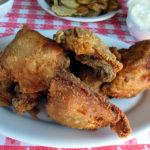
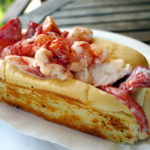
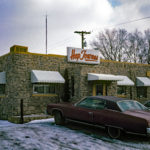
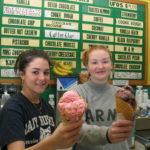
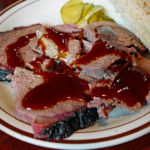
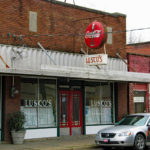
One Response to “Oh What a Beautiful Burger”
Harriet Vogt
March 23rd, 2022
What a treat! I was born and raised in El Reno and remember Johnnies and some of the others We always considered a good grilled hamburger a really good treat at a reasonable price.
El Reno has a very old History – way before Oklahoma City and you have brought back so many wonderful memories. Now I’m hungry for a hamburger!